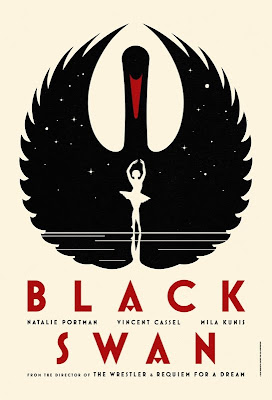Mental_Floss:
Yesterday I came across a slightly mysterious website — a collection of Polaroids, one per day, from March 31, 1979 through October 25, 1997. There’s no author listed, no contact info, and no other indication as to where these came from. So, naturally, I started looking through the photos. I was stunned by what I found. In 1979 the photos start casually, with pictures of friends, picnics, dinners, and so on. Here’s an example from April 23, 1979 (I believe the photographer of the series is the man in the left foreground in this picture):

By 1980, we start to figure out that the photographer is a filmmaker. He gets a letter from the American Film Festival and takes a photo on January 30, 1980:

Some days he doesn’t photograph anything interesting, so instead takes a photo of the date. Update: this was an incorrect guess; see the bottom of this post for more info on these date-only pictures.

Throughout the 1980s we see more family/fun photos, but also some glimpses of the photographer’s filmmaking and music. Here’s someone recording audio in a film editing studio from February 5, 1983:

The photographer is a big Mets fan. Here’s a shot of him and a friend with Mets tickets on April 29, 1986:

In the late 1980s we start seeing more evidence that the photographer is also a musician. He plays the accordion, and has friends who play various stringed instruments. What kind of music are they playing? Here’s a photo from July 2, 1989 of the photographer with his instrument:

In 1991, we see visual evidence of the photographs so far. The photographer has been collecting them in Polaroid boxes inside suitcases, as seen in this photo from March 30, 1991:

On December 6, 1993, he marks Frank Zappa’s death with this photo:

The 1990s seem to be a good time for the photographer. We see him spending more time with friends, and less time photographing street subjects (of which there are many — I just didn’t include them above). Perhaps one of his films made it to IFC, the Independent Film Channel, as seen in this photo from December 18, 1996:

Throughout early 1997, we start to see the photographer himself more and more often. Sometimes his face is obscured behind objects. Other times he’s passed out on the couch. When he’s shown with people, he isn’t smiling. On May 2 1997, something bad has happened:

By May 4, 1997, it’s clear that he has cancer:

His health rapidly declining, the photographer takes a mirror-self-portrait on June 2, 1997:

By the end of that month, he’s completely bald:

His health continues to decline through July, August, and September 1997, with several trips to the hospital and apparent chemotherapy. On the bright side, on September 11, 1997, the photographer’s hair starts to grow back:

On October 5, 1997, it’s pretty clear what this picture means:

Two days later we see the wedding:

And just a few weeks later he’s back in the hospital. On October 24, 1997, we see a friend playing music in the hospital room:

The next day the photographer dies.
What started for me as an amusing collection of photos — who takes photos every day for eighteen years? — ended with a shock. Who was this man? How did his photos end up on the web? I went on a two-day hunt, examined the source code of the website, and tried various Google tricks.
Finally my investigation turned up the photographer as Jamie Livingston, and he did indeed take a photo every day for eighteen years, until the day he died, using a Polaroid SX-70 camera. He called the project “Photo of the Day” and presumably planned to collect them at some point — had he lived. He died on October 25, 1997 — his 41st birthday.
After Livingston’s death, his friends Hugh Crawford and Betsy Reid put together a public exhibit and website using the photos and called it PHOTO OF THE DAY: 1979-1997, 6,697 Polaroids, dated in sequence. The physical exhibit opened in 2007 at the Bertelsmann Campus Center at Bard College (where Livingston started the series, as a student, way back when). The exhibit included rephotographs of every Polaroid and took up a 7 x 120 foot space.
You can read more about the project at this blog (apparently written by Crawford?). Or just look at the website. It’s a stunning account of a man’s life and death. All photos above are from the website.
Update: I’ve made contact with Hugh Crawford and his wife Louise. Apparently the pictures that are just dates aren’t Polaroids — they’re placeholders for days when there was no photo, or the photo was lost.
Update 2: After hitting the Digg homepage, the original site has been taken down by the host. Hopefully it’ll be back up overnight; in the meantime if anyone has a mirror of the original site, please leave a link in the comments (you have to leave off the http part).
Update 3: The original website is back up! Hugh has managed to restore service, and it looks like the site is now cached across multiple servers. It’s still a little slow due to the huge amount of traffic, but at least it works. Go check it out.
Update 4: Jamie Livingston has been added to Wikipedia.
Update 5: Many people have asked about the Polaroid SX-70 camera. Check out this Eames film explaining the camera.
by Chris Higgins - May 21, 2008 - 3:30 PM
 Sears, in the spirit of Halloween (or zombie apocalypse) has created a zombie department on their website. I took a look at it, it was hard to navigate because I don't know what 'zhabbanh mahn zamblahz' means.
Sears, in the spirit of Halloween (or zombie apocalypse) has created a zombie department on their website. I took a look at it, it was hard to navigate because I don't know what 'zhabbanh mahn zamblahz' means.










--2010-18-x-24_inches_Hand-painted-with-oils.jpg)
























































